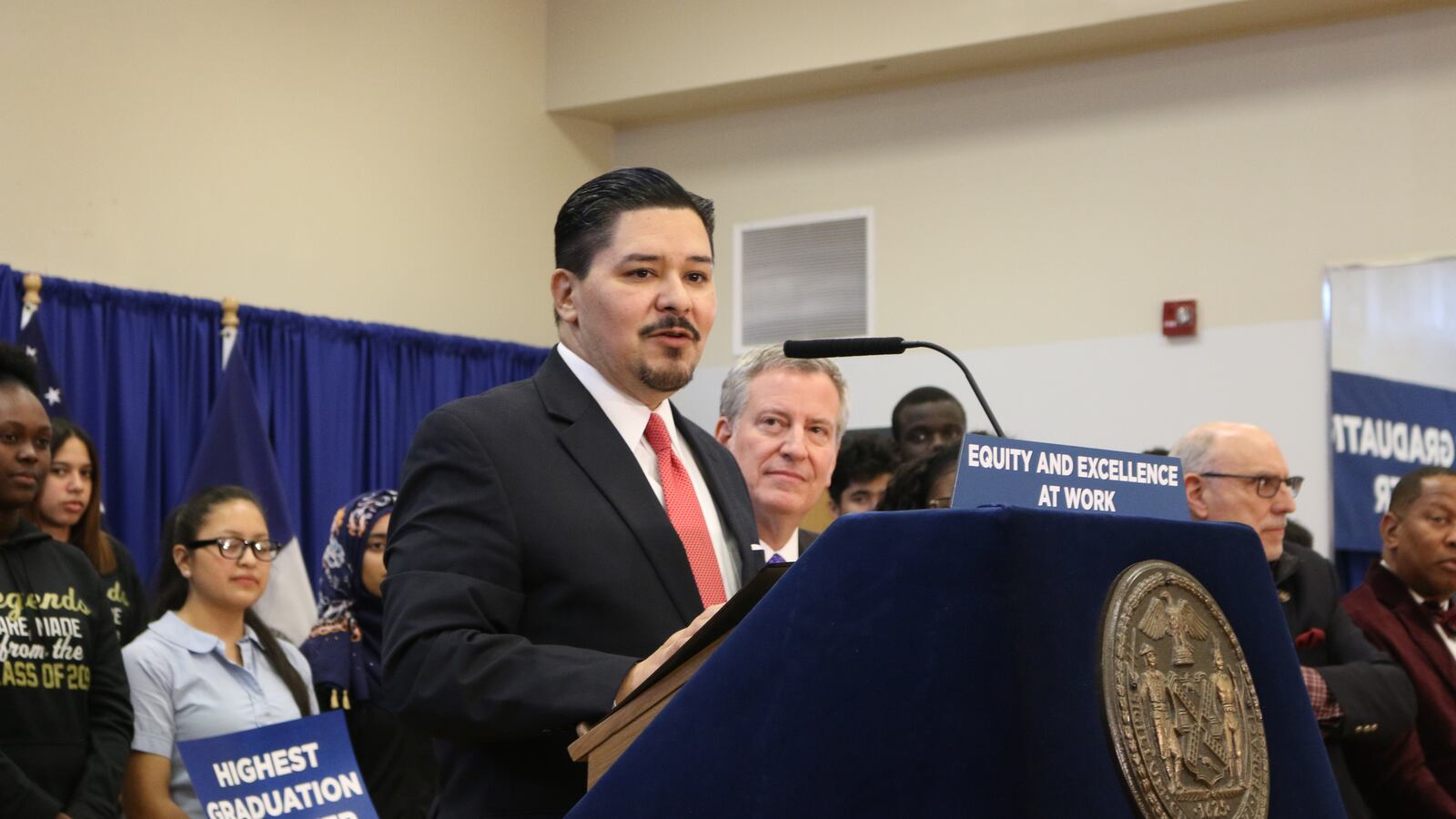New York City continued the trend of steadily increasing its graduation rate, as the percentage of students who received diplomas climbed to almost 76 percent in 2018, according to state data released Wednesday.
That’s a 1.6 percent increase in the number of New York City’s seniors who graduated compared to 2017, when 74.3 percent earned diplomas. City graduation rates have steadily increased since 2005, when the graduation rate was 46 percent, amid efforts by the state to make earning a diploma easier.
The city’s graduation rate, which includes students who entered high school in 2014 and graduated by August 2018, improved at a higher rate than the state overall, which rose from 80.2 to 80.4 percent.
How did your school fare? Check here
Graduation rates at charter schools fell by 2.5 percent across the state, but they increased in the city by .7 percentage points, to 76.3 percent, according to city officials.
Like last year, the city’s dropout rate slightly fell to 7.5 percent from 7.8 percent, making it the lowest rate on record. The Bronx was the only borough where dropout rates slightly increased after almost five years of declines.
City officials touted the results as evidence of mayoral control and setting a goal under former Chancellor Carmen Fariña to reach an 80-percent graduation rate. “This city has proven public education can surpass all expectations, and it’s happening very, very rapidly,” said Mayor Bill de Blasio at a press conference.
However, the rising graduation rates continue to be affected by changes in state graduation requirements made before last year, meaning the trend may not entirely reflect gains in student learning. Graduation rates have been rising nationwide, but test scores on the National Assessment of Educational Progress, considered the gold standard for measuring student achievement, have not always shown a commensurate increase, data analyzed by Chalkbeat shows.
In one of the more significant changes, the state began allowing students to opt out of a social studies exit exam, substituting other assessments in math, art, or career and technical education. Across the state, 11,200 students took advantage of one of these options, up from about 9,900 the year before. In New York City, 2,454 students opted for one of the alternative options, compared to 2,060 the year before. This year, 170 New York City students used an additional option of taking tests in one of four different languages.
State officials have also made it easier to appeal a low score on high school exit exams. Last year, roughly 2,754 city students successfully appealed low scores, more than five times as many as before the new policy took effect in 2016.
Of all city graduates, 66.6 percent were also deemed college-ready, according to a benchmark created by City University of New York. That’s up from 63.5 percent last year, when CUNY eased readiness requirements.
The state maintained Wednesday that the gains are not artificial. “It’s not as though we are decreasing the rigor,” said State Education Commissioner MaryEllen Elia in a call with reporters. “We’re not. We’re just offering other options.”
And students are still required to complete 22 credits, so “even though we may have pathways to graduation, you still have students taking the 22 credits that are required,” Elia said.
De Blasio’s administration urged caution when state test scores were released last year because changes at the state-level made results almost impossible to compare year to year. That idea is different when it comes to graduation rates, de Blasio said on Wednesday, which are a more “tangible thing” and are “so clear and consistent that I think it transcends the various adjustments.”
He called the multiple measures and pathways to graduation legitimate. “No one is getting a pass,” Chancellor Richard Carranza said.
Graduation rates rose overall for low-performing schools in de Blasio’s Renewal and Rise program, an effort to turn around struggling schools with a mix of new social services and academic support. Overall, grad rates increased almost 7 percentage points last year, to roughly 72 percent.
Gaps continue to exist between the graduation rates of white, black, and Hispanic students in New York City and statewide. Elia called this “troubling” and in need of more work at the state level, though the discrepancies are shrinking.
In New York City, the graduation rate among black and Hispanic students was 72.1 and 70 percent, respectively, compared to 84.2 percent among white students.
Graduation rates improved among students learning English as another language and students with disabilities, but remained relatively flat for economically disadvantaged students, city data shows.
In a tweet, advocacy group Advocates For Children New York said the improvements were encouraging, but that “gaps remain massive” — 34.7 percent of English language learners and 50.4 percent of students with disabilities graduated on time.
This story has been updated to reflect the most current number of students who graduated on appeal and the citywide charter school graduation rate.

